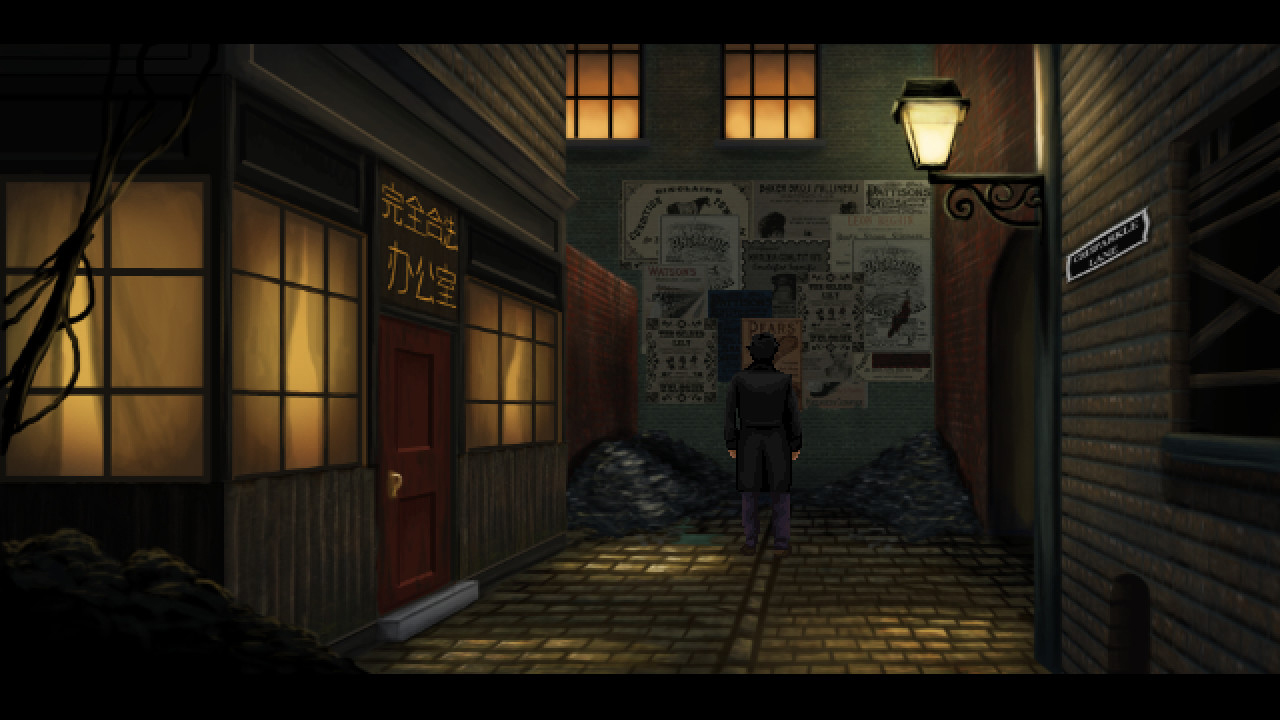Lamplight City is a point-and-click detective story originally released for PC. The game is designed for use with a mouse, but Joy-Con works fine. If you can tolerate a small screen in handheld mode, it may be faster to tap to select the item to inspect or where to move, but it’s best to leave the text selection to Joy-Con. On the TV, you have to use Joy-Con for everything, and the pointer movement is a bit slower. All you need to do is press A to select, Y to show all target items, and B to exit the menu.
I played several similar games, from hidden objects to mystery / story adventures. The Lamplight City visuals are in the middle of the visual appeal field. Games are highly pixelated by modern standards. I think the theme is a mix of the Industrial Revolution and steampunk, but that doesn’t mean the game doesn’t look smooth and attractive, especially given the lack of movement. Sure, the character can walk around, but each scene is static.
So I hope you’ll see a better grade of artwork. The art is styled to reflect the intended situation. This is a mid-19th century steam punk world with Victorian sensibilities scattered around (games ignore it if necessary).
In terms of audio, background music deserves a mystery mood and is unobtrusive. It’s working well.
Unfortunately, Lamplight City is a bit flatter for me. Indeed, the game contains a selection of action or dialog options. These interactions can lead to a variety of consequences, such as making the case unresolvable (which can fail in this game).

However, the nature of gameplay is that in most cases you just click A to advance the dialog. It’s the same as turning the pages of a book, as the game is divided into real detective work, reasoning, and gameplay. The latter occupies a large part of the game time.
Another feature of the game that adds available information (and disables the ability to reason things on its own) is the “internal dialogue” that takes place in the mind of the main character (Mr. Fordham). He has an ongoing dialogue with dead companions that helps tell a part of the story, but it provides too much information and often makes player inferences. The overall effect is a bit annoying as it deprives you of the joy of putting things together and understanding the case yourself.
The pace of Lamplight City is slow, but this is primarily due to the nature of the game (storytelling, detective work, etc.). The map is provided and basically follows where the map guides you between the deadman talk and the dialog prompt from the NPC interaction. There are some times when you need to take a leap in logic and revisit some places on the map.

This type of game has more annoying aspects, such as not being able to interact with clearly important objects because you haven’t visited the right place or talked to the right person. This is not uncommon in this type of game, but it would be great if you could act like a real detective rather than go a specific path.
Overall, Lamplight City has some great elements and a decent level of replay value. If you get stuck, you can start over with a new game, experiment with different answers and options, and take a different path. There are some plots in the story, but it’s not enough to really grab me and get me interested.

